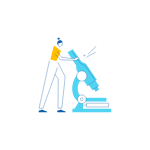When most people think of addictions, their mind automatically goes to alcohol or drug abuse, but there are other types of addictions too. Behavioral addictions, also referred to as process addictions, involve engaging in harmful habits despite the consequences. You may find the behavior temporarily rewarding—a cheap hit of happy—but you may be filled with shame and regret later due to the repercussions of those actions. Like substance use disorders (SUD), behavioral addictions can ruin lives and devastate families, and they need to be taken seriously.
Anyone can have a behavioral addiction. Many everyday habits and activities that people engage in on a regular basis can become obsessions or obligations. Some of the most common behavioral addictions listed below. (Please also see below for more information about these common behavioral addictions.)
There are many signs that indicate a favorite activity has gone too far, including:
Although there is no single cause for behavioral addictions, experts have identified numerous contributing factors. These include a genetic predisposition for addictive behaviors, changes in the structure and function of the brain, emotional trauma, and acute stress.
Our Mission
Our brain imaging work has helped us identify 6 types of brain patterns associated with behavioral addictions. When it comes to treatment, one size does not fit all! What works for one person with a behavioral addiction may not work for another—or could even make your symptoms worse! Based on your addiction type, we can create a personalized treatment plan using the least toxic, most effective therapies and strategies to optimize your brain and help you regain control of your life.

Brain dysfunction is the #1 reason why people fall victim to addiction. Your brain plays a central role in your vulnerability to addiction and your ability to recover and avoid harmful behaviors. Behavioral addictions involve multiple areas of the brain, such as the prefrontal cortex (PFC), anterior cingulate gyrus (ACG), nucleus accumbens, amygdala, and hippocampus.
SPECT (single photon emission computed tomography) is a nuclear medicine study that evaluates blood flow and activity in the brain. Basically, it shows three things: healthy activity, too little activity, or too much activity. The healthy surface brain SPECT scan on the left shows full, even, symmetrical activity. The brain scan on the right from a person with sex addiction, brain trauma, ADHD, and cocaine abuse shows lower overall activity, including in the PFC. Low activity in the PFC is associated with impulsive behavior.
People with this type have trouble shifting their attention and tend to get stuck on obsessive thoughts of gambling, internet porn, food, or some other behavior. Regardless of what these people are addicted to, the thinking pattern and basic mechanism are the same. They tend to get locked into one course of action and have trouble seeing options. The most common brain SPECT finding in this type is increased anterior cingulate gyrus activity, which is most commonly caused by low brain serotonin levels.
People with this type have trouble with impulse control even though they may start each day with the intention of refraining from their addictive behaviors. The most common SPECT finding for this type is low activity in the prefrontal cortex (PFC), likely due to low levels of dopamine.
The PFC acts as the brain’s supervisor and is involved in impulse control, judgment, planning, follow through, decision-making, and attention. When the PFC is underactive, people can be easily distracted, bored, inattentive, and impulsive. This type is often seen in conjunction with ADD/ADHD and is more common in males.
People with this type have a combination of both impulsive and compulsive features. The brain SPECT scans tend to show low activity in the prefrontal cortex (associated with impulsivity, likely due to low dopamine levels) and too much activity in the anterior cingulate gyrus (associated with compulsivity and low serotonin levels). This pattern is common in the children and grandchildren of alcoholics.
People with this type often engage in behaviors or use food to medicate underlying feelings of depression, boredom, or loneliness. This type is more commonly seen in women. The typical SPECT findings associated with this type are increased activity in the deep limbic system and low activity in the prefrontal cortex.
People with this type tend to engage in behaviors or use food to medicate underlying feelings of anxiety, tension, nervousness, and fear. More commonly seen in women, this type tends to suffer physical symptoms of anxiety, such as muscle tension, headaches, stomachaches, and heart palpitations. People with this type tend to predict the worst and may be excessively shy or easily startled. The SPECT finding that correlates to this type is too much activity in the basal ganglia, likely due to low levels of GABA.
People with this type tend to have problems with temper, mood swings, learning, and memory. Abnormal activity in the temporal lobes is commonly due to past head injuries, infections, a lack of oxygen, exposure to environmental toxins (such as toxic mold), or it may be inherited. The SPECT findings typically show decreased activity in the temporal lobes, although sometimes increased activity is present.
This is some of the feedback we have received from our esteemed clients.
























Literally everyone. I’m currently helping people from 12 to 60+ years old. Everyone is getting an adjusted program and a meal plan.
© Nipro Life Sciences Private Limited. All Rights Reserved.
